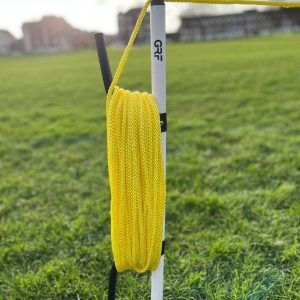Gavin Step, FA talent technical coach, outlines the dangers of copycat coaching and offers examples of how to tailor coaching sessions to individual players.
Never before have football coaches had access to as many ‘off the shelf’ coaching sessions. Through social media and the internet a huge volume of ideas exist to inform practice design.
The challenge with these sessions is how to deliver the content to meet the needs of individual players. With generic sessions it is unlikely that the whole group will benefit to the same level as if the session was individualised.
Does the girl attending her first football session have the same needs as the boy who has been playing for three years? Does the youth international full-back have the same needs as the centre midfielder returning from injury? For each player in the session it’s important to ask: what’s the point of it?
It goes without saying that the best coaches plan their sessions with learning objectives and outcomes at their core. Additionally, I have seen some really thoughtful examples of coaches who plan individual learning objectives for every player in their squad.
However, I’ve often wondered what this looks like on the grass. During a 60-90 minute session, is it realistic for a coach to facilitate and achieve the learning objectives for the session along with 16 individualised learning objectives? Even with the support of an assistant coach, this can prove challenging.
Yet, it is vital that we consider the specific requirements of our players when planning and delivering. Some good examples from clubs I work with include players being set individual targets at the start of a coaching block that remain for the duration of that period of work.
Targets are written, laminated and present at all coaching sessions. On the whole, it is the player’s responsibility to ensure they are working towards their individual target, session on session. The role of the coach is to design practices that allow the player to explore and develop their specific target. What they do not do is set a new target week after week, hoping to achieve these every new hour of work they have with their players.
When I work with players, I list both session objective and success criteria. Along with what I plan on focusing on, I list criteria I think will help the players successfully achieve the session objective. These will be displayed on either a whiteboard or flipchart. For example:
Session Objective
Technical
Help the team progress and penetrate through the thirds
Success Criteria
1) You will make forward passes with quality through defensive lines
2) You will travel with control and composure through defensive lines
3) You will make positive runs ahead of the ball to support teammates
Session Objective
Social
Display resilience when faced with a challenging situation in training
Success Criteria
1) You will use positive language to yourself and with others
2) You will display positive body language
3) You will encourage others when they find the ‘going gets tough’
Players are tasked to select one or more of the success criteria to focus on for the session.They commit to this by initialling and signing against it.
Sometimes I use subtle questioning to lead players towards an objective I feel they may benefit from focusing on.Sometimes I tell a player what I think they should work on. Other times I say nothing at all. This could be described as player-centred coaching within coach-determined parameters. To support the players’ learning, I list success criteria that helps guide the players towards the outcomes I hope they will achieve. With time, players can generate their own criteria. They suggest what they think they must do to successfully achieve the session objective.
The success criteria are the hooks that I return to within the session. Reminding the players of the session focus and specific elements they have committed to work on at the outset of the session. This supports them to achieve what I have planned and intended for them to learn. When I reflect on what is the point of my session, the players themselves drive the individual targets as to what they feel the point of the session has been for them.
In designing individual challenges, I propose a menu of choice and it is up to the player to select the focus of their work.
Gavin Step is an FA talent technical coach working in the women’s game.








0 Comments